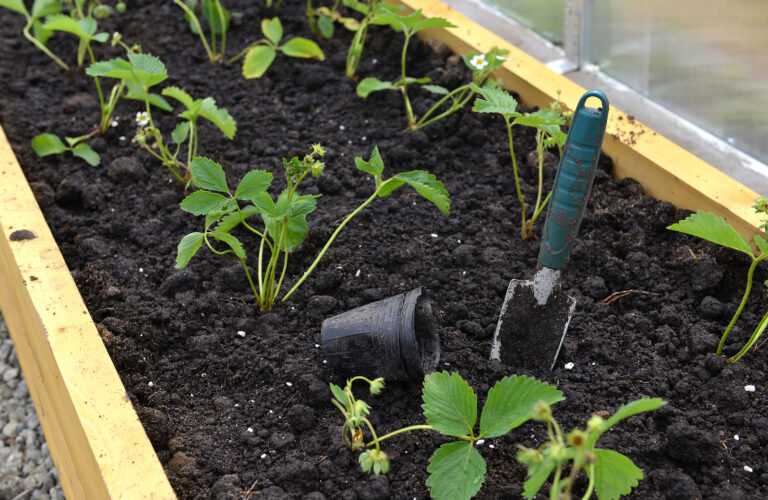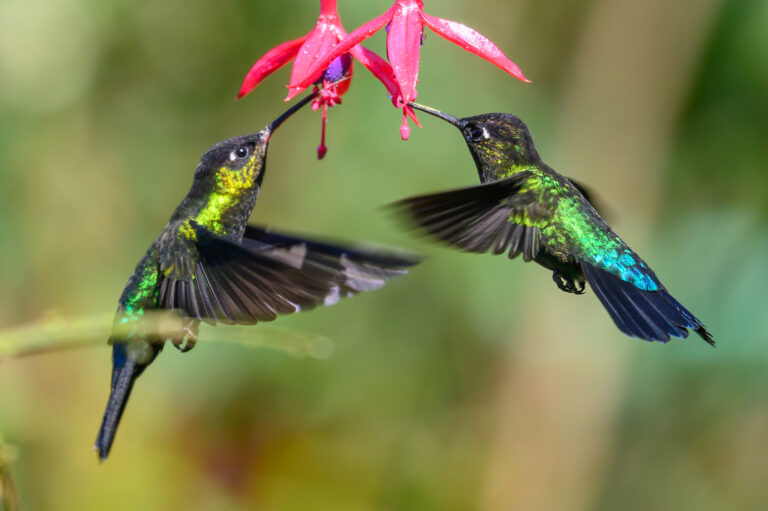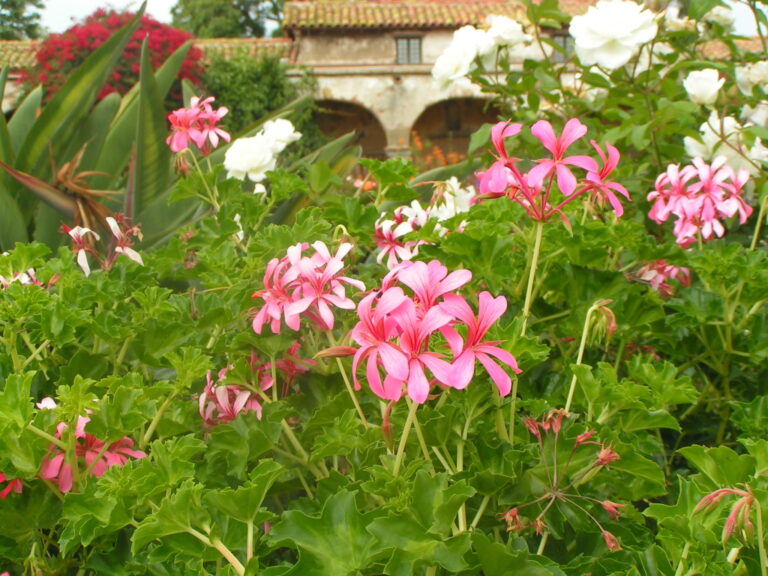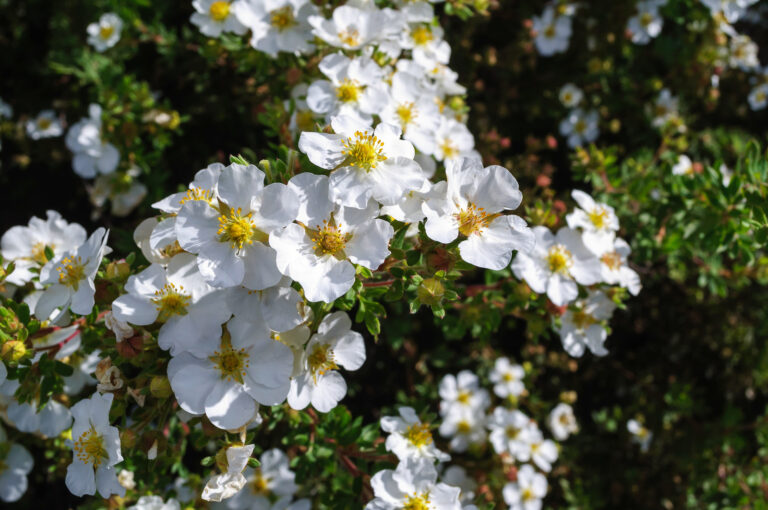Growing Perennials, Shrubs, and Small Trees to Support the Vegetable Garden
Interplanting isn’t limited to annual vegetables. Perennials, shrubs, and small trees can be strategically planted in or around the vegetable garden to create a diverse, resilient ecosystem. These plants provide habitat, nectar, and pollen for beneficial insects such as ladybugs, lacewings, bees, and parasitic wasps, which in turn help control pests and improve pollination.
Why Include Perennials and Woody Plants
- Habitat for beneficial insects: Many predators and pollinators require shelter, nesting sites, or food sources beyond the growing season of vegetables.
- Continuous flowering: Shrubs and perennials can bloom at different times, offering resources throughout the season.
- Microclimate benefits: Small trees and shrubs provide partial shade, windbreaks, and moisture retention for vegetable crops.
- Soil improvement: Deep-rooted perennials recycle nutrients from lower soil layers.
Examples of Beneficial Perennials, Shrubs, and Small Trees
| Plant Type | Example Plants | Benefit |
|---|---|---|
| Perennials | Echinacea, Yarrow, Lemon Balm | Attract pollinators and predatory insects |
| Shrubs | Lavender, Rosemary, Sage, Buckwheat | Provide nectar and shelter for beneficial insects |
| Small Trees | Dwarf Apple, Serviceberry, Elderberry | Shelter and forage for pollinators; support vertical space use |
| Groundcover Perennials | Thyme, Creeping Phlox | Suppress weeds and attract small beneficial insects |
Planting Strategies
- Edge planting: Place shrubs or small trees along garden borders to attract beneficial insects and provide wind protection.
- Interspersed planting: Include perennials in vegetable beds where they won’t shade low-growing crops.
- Layered planting: Combine low perennials, mid-height shrubs, and small trees for vertical habitat diversity.
- Continuous bloom: Select plants with staggered flowering periods to maintain beneficial insect populations all season.
- Avoid invasive species: Ensure plants won’t compete aggressively with vegetable crops.
By integrating woody and perennial plants, you transform your vegetable garden into a multi-layered, insect-friendly ecosystem. This interplanting strategy naturally supports pest control, pollination, and soil health while creating a more resilient, productive garden over time.
Beneficial Woody and Perennial Companion Chart for Vegetable Gardens
| Vegetable / Crop | Recommended Perennials, Shrubs, or Small Trees | Primary Benefit | Planting Notes |
|---|---|---|---|
| Tomatoes | Basil (perennial in warm zones), Lemon Balm, Yarrow, Lavender | Attract pollinators, repel pests | Interplant at edges or corners; avoid shading main crop |
| Peppers | Rosemary, Sage, Thyme, Echinacea | Nectar for beneficial insects (ladybugs, lacewings) | Plant along bed edges or in mixed border beds |
| Cucumbers | Buckwheat, Nasturtiums, Creeping Thyme | Trap pests, attract predatory insects | Interplant around cucumber rows; provide ground cover |
| Squash / Pumpkins | Echinacea, Yarrow, Lavender | Attract pollinators | Plant along field edges or near trellised crops |
| Brassicas (Cabbage, Kale, Broccoli) | Fennel, Dill, Yarrow, Lavender | Attract parasitic wasps and hoverflies | Place in proximity; do not shade low-growing crops |
| Carrots / Root Vegetables | Marigold, Creeping Thyme, Lemon Balm | Repel nematodes; attract beneficial insects | Plant along row edges; cover gaps with low perennials |
| Lettuce / Spinach | Thyme, Creeping Phlox, Alyssum | Attract small predatory insects | Interplant in open spaces or along bed borders |
| Beans / Peas | Buckwheat, Echinacea, Lavender | Pollinator attraction, beneficial insect habitat | Plant at edges or interspersed; provide vertical support if needed |
| General Vegetable Beds | Dwarf Apple, Serviceberry, Elderberry | Shelter for pollinators and predatory insects; fruit yield | Plant at garden periphery; ensure enough sun for vegetables |
Planting Tips
- Edge planting: Small shrubs and trees around garden borders attract insects without shading vegetables.
- Interspersed planting: Low perennials can be planted within vegetable beds to fill gaps and maintain habitat diversity.
- Layering: Combine groundcovers, mid-height shrubs, and small trees for vertical habitat diversity.
- Continuous bloom: Select plants with staggered flowering times to sustain beneficial insect populations.
- Sunlight management: Ensure taller shrubs or trees do not shade sun-loving vegetables.






